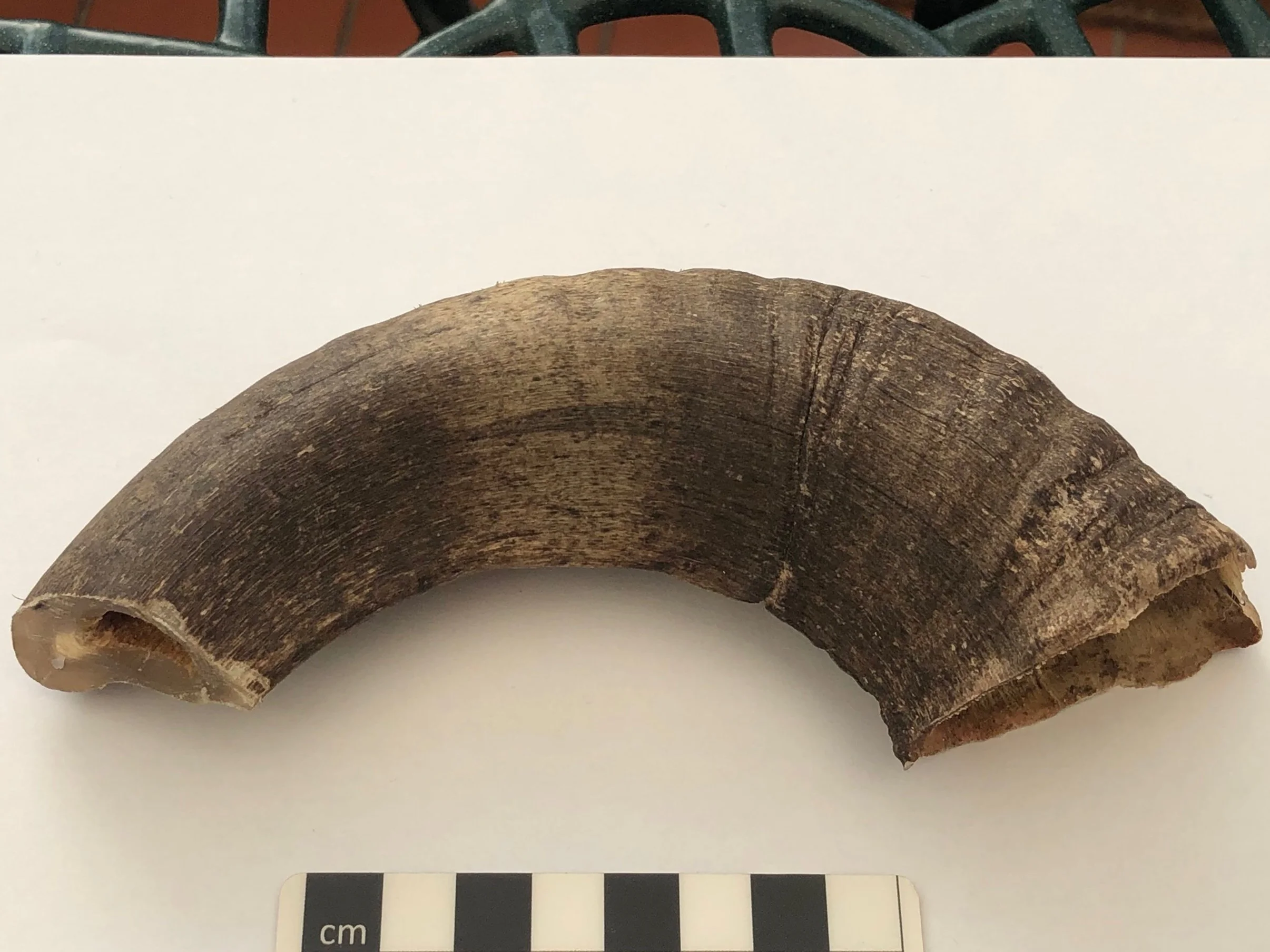Horns (and Trumpets)
The horn, and potentially trumpet, is one of the most frequently mentioned instruments of Anglo-Saxon epics such as Beowulf. Often mentioned as sounding during battle, the horn, or trumpet, also features in some of the riddles. The translation of the terms is not always clear, or even what is meant by the different terms, with both horn, often translated as horn, and byman, generally translated as trumpet being used. What is clear is the presence of a lip vibrated instrument – here it will be called horn, but this should not be thought of in the same terms as today.
A horn may have been made using natural animal horn, such as cattle, sheep or ox, by removing the core and cutting the tip off. Some of the depictions and descriptions suggest decoration was added in metal. If the instrument was made from wood this could have been carved out.
Despite the literary references, and even some depictions, there is no known archaeological evidence from this period. Instruments such as the River Erne Horn, being remarkably similar to an instrument played in a manuscript image of King David, may have existed but not been found or lost through degradation.
It is possible that evidence for the horn has previously been overlooked. Horns are found in come burials of the time, and generally described as drinking vessels. While those from Sutton Hoo and Taplow, for example, feature metal rivets meaning they were almost certainly used as drinking vessels, the horn from Prittelwell has no such feature and consequently may have been a sounding horn, although the evidence is not conclusive either way.
Metal fittings from Taeppa’s burial mound, Taplow, Buckinghamshire, are here shown on a replica horn, and demonstrate how they would have fitted on such an object. The tip metal fitting with rivets of this set means they could not have been on a sounding horn, and would have been from a drinking horn.
The horn metal mounts can be found in the British Museum along with the other finds from Taeppa’s burial mound.
A recreated horn (sheep) played in woodland.
These videos give an idea of what a horn made from a sheep horn may have sounded like in both a woodland and open area. Depending on the level of skill of the player, different pitches might have been possible.
A recreated horn (sheep) played in open countryside.
To continue exploring the wind instruments, click here.


